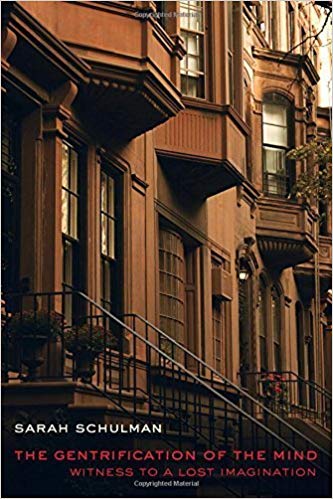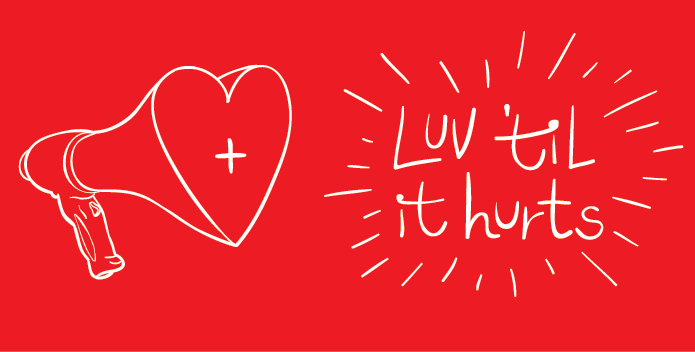What Does a Queer Urban Future Look Like?

[ *Back during the making of Cidade Queer (an inquiry opened by Lanchonete.org), I got the chance to ask some colleagues their views on queerness and a right to the city. I asked Sarah Schulman if ‘the urban’—yes, cities as well as urban encounters…but also the space and right(s) to live in, work in, and share the contemporary city—is an important source or reference for her work? Jose Esteban Muñoz begins his book, “Cruising Utopia: The Then and There of Queer Futurity” (2009), with these words: “Queerness is an aspiration toward the future. To be queer is to imagine better possible futures.” So I guess what I’m asking is what a queer urban future might look/feel like to you? xo, Todd ]
Obviously, great cities are in terrible trouble as gentrification homogenizes their souls. However, there are still some core experiences of difference that make a place like New York City a center for the production of new ideas. After all, it is the mix that signifies urbanity, the irrefutable knowledge that people are different, which is built into real city living. In some places people wake up in privatized houses, they walk through their front doors and step into cars, and then drive to work and park.
This twice-a-day seminal experience is one of isolation and repetition. But waking up in an apartment building means recognizing your neighbors’ realities: who was fired, who is sick, who is in love, who can’t control their drug use, whose kid has finally gotten a job. By the time you get outside, there is already the knowledge that other people are real. Then, we walk through the neighborhood, see which businesses have been driven out, what new chains are devouring territory, which brave independent entrepreneurs are trying something new, waving, avoiding, chatting, making amends. Jump on the subway, where the knowledge that people suffer, have contradictions and need support is always present. And finally, get to work. This is an experience of recognizing difference. Of having to think about other people, notice them, and maybe even talk. This engagement is the source of great inspiration.
I have written so many books about the people in my building, my neighborhood, on the subway, on the street. They embody my life and my pages. So, when I imagine a future for myself and for my city, they are inseparable. My city is part of my heart, not something to drive through on the way. And New Yorkers love to talk to each other. We practice recognition. Recently, I have come to understand, profoundly, the difference between provincial cities and really urban ones: the range of communities.
In NYC, if you burn out on one queer, black, arts community, there are actually several other queer, black arts communities to connect with, and all the other larger communities that also include queer and black. There isn’t one clique controlling experimental film. There are many. While of course, being on the outs with those in power can be awful—just the worst—the machine is just too big to stay stagnant. And while some people are afraid of speaking back to power, plenty are not. When I see what kind of group bullying goes on in smaller places, where queers and artists act like In The Heat Of The Night, or those realist horror films where all the “best” citizens are secretly in the Klan and there is no escape, well, in NYC, there is always an escape. And what that means is that we have the freedom to change. Despite gentrification, there are still subcultures, substructures, undergrounds—some of which desperately want to be recognized, and others which absolutely don’t. There are hundreds of dance scenes, multiple ethnicities of Chinese, everything you could ever want to eat, more musicians than there are places to hear them, the greatest actors in the country, and beauty at your fingertips. There is the petty and there is the very deep.
“Queer” is a category in flux, and urban queer is on a huge continuum. We have the banal, the spoiled, the exploitative, the boring. We have the expansive, the inquisitive, the creative, the open hearted. We have the consumer, and the producer. We have the new abject object, the new queer: the undocumented, trans*, HIV positive, the queers whom the police shoot to kill. We have those of us who are not in families, and therefore not the ideal consumer, the community-based queers, who share a public space, and the privatized queers who put their citizenship first. Right now, everything “queer” that has a place of honor is somehow rooted in the family. Just this year in media: Transparent, Fun Home, The Argonauts, even Carol—who, in the book, was somewhat repulsed by her child, but in the film became a mother, giving that famous plea for tolerance speech that is required by the tolerant.
But what about the rest of us? Where are we? Looking around, I see queer in the leadership of Black Lives Matter and the new Black Student Movement. I see queer inside Palestine Solidarity. I see a place for queers who have an agenda bigger than their queer selves. And for the rest, I see an invitation into the status quo. And some of us are inside each room. And some of us don’t have a room as the city struggles to find homes for its own children. There is a building on 57th Street in which every apartment is a floor through and costs 100 million dollars. Real estate is like a security box for some of the globe’s elite. It’s a safe place to put your money. East New York was offered graduated income housing, but it’s not a graduated income neighborhood. We need 500,000 housing units to save our soul. At least we know the terms of the goal. We need to be rescued and to save ourselves. The homogenized lose consciousness, and don’t understand the fight. But it only takes a critical mass to make the change. A new society is literally being built on top of the old. All extant housing stock is already claimed; now, they are constructing towers without public aspects: no hospitals, no schools, a heliport on a building’s roof. And yet, my over-crowded classroom has 16 nationalities. My job is to open their hearts.
________________________________
*To read 10 more responses to ‘What does a queer urban future look like?’, click here.


